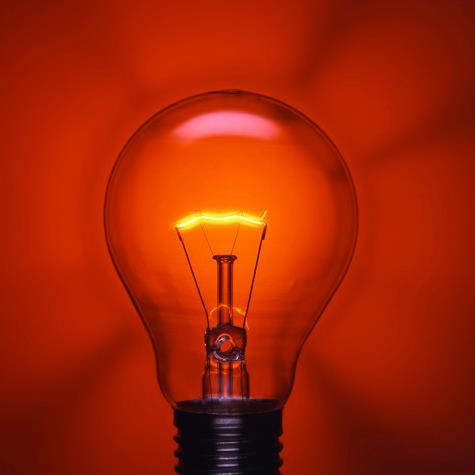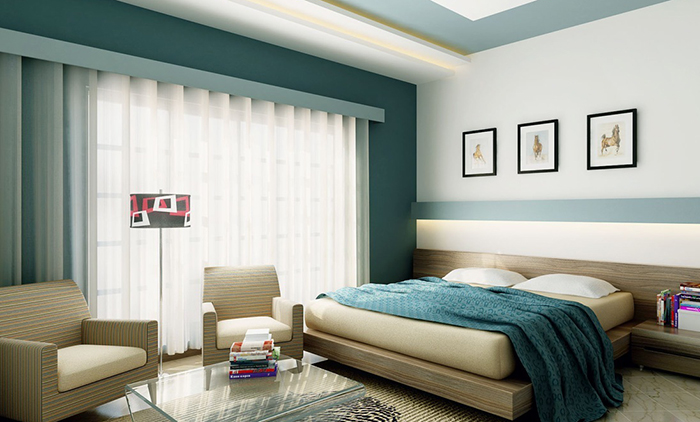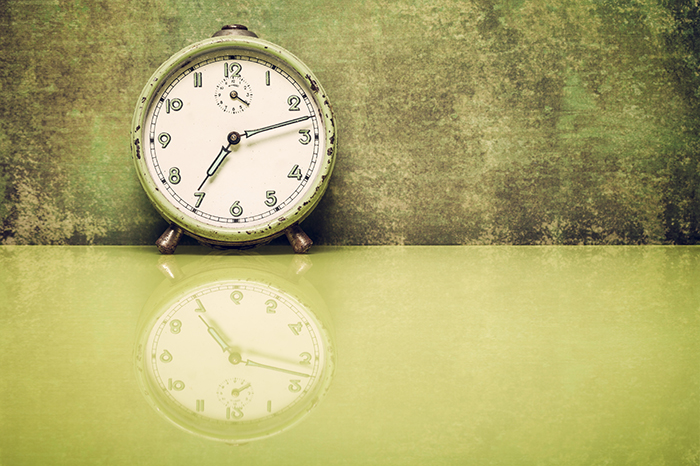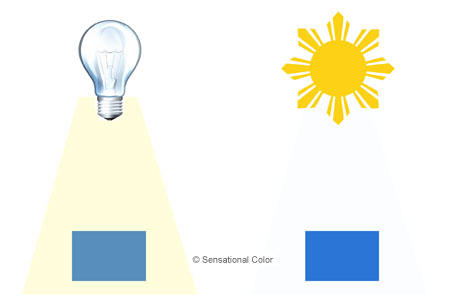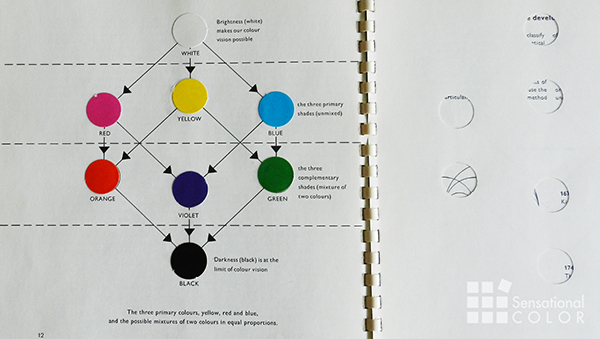![bauhaus color]()
BAUHAUS COLOR THEORY
We think of color as transcendent – a language of sorts that signifies independent of cultural differences, time period, or aesthetic movement. Color is a powerful tool that permits designers to influence mood, compose spaces, and even make profound statements. We accept these truths about color, but we don’t often take the time to examine the roots of these core beliefs – where these ideas came from and how they were promoted.
![bauhaus color]()
If fact, it surprises many designers to discover that part of the foundation of our modern understanding of color and its uses is rooted in a design movement dating back to the early 20th century. The Bauhaus movement and its institute were born in Germany in 1919. Though the German school only lasted until 1933, when the Nazi government forced it to close, the Bauhaus not only educated many influential artists in a variety of disciplines, but it also spawned programs in other countries, including the US.
One of the most enduring influences of the Bauhaus, though, is the color theory that was taught under four prominent artists. The contributions of Johannes Itten, Wassily Kandinsky, Paul Klee, and Josef Albers undergird much of what we currently understand and believe about color, and an examination of the teachings of these four artists helps us understand not only the formation of modern color theory, but indeed how color theory is developed and transmitted.
BAUHAUS COLOR ACCORDING TO ITTEN
![Bauhaus Color Johannes Itten Bauhaus Color Johannes Itten]()
"Farbkreis Itten 1961" by Zeichner: Malte Ahrens - Quelle: selbst erstellt
Johannes Itten taught at the Bauhaus from 1919 until 1922, and he taught one of the fundamental preliminary courses that – among other things – grappled with color theory. Itten gave us a color sphere comprised of twelve colors (three primary, three secondary, and six tertiary) that shows the relationship among colors, as well as gradations of saturation. The influence of psychoanalysis is apparent in Itten’s color theory, as he was one of the first to associate different colors with specific emotions and study the impact of color on our moods. He also studied how individuals perceive color.
Itten taught that there were seven different methods of contrast: contrast of saturation, of light and dark, of extension, complementary contrast, simultaneous contrast, contrast of hue, and contrast between warm and cool colors. One of his particularly interesting practices in the classroom was to work students through an examination of color and in particular his theory about contrast by first examining abstract works, reflecting the Bauhaus’ move away from exclusively representational works. After students studied the abstract pieces, they would move on to look at more realistic works, and finally would apply what they had learned of color theory to their understanding of classical works.
Itten’s most enduring contribution to modern day color theory, though, is his characterization of colors in terms of temperature, and his designations of certain colors as warm and others as cool persists to this day.
BAUHAUS COLOR ACCORDING TO KANDINSKY
![Bauhaus Color Wassily Kandinsky Bauhaus Color Wassily Kandinsky]() Composition 6" by Wassily Kandinsky, 1913 - State Hermitage Museum
Composition 6" by Wassily Kandinsky, 1913 - State Hermitage Museum
Wassily Kandinsky, the Russian painter best known for his bold, geometric abstract works, taught at the Bauhaus from 1922 until it closed in 1933. He considered color to be an utterly transcendent language of sorts, a way to examine the universal aesthetic. He adopted a synesthetic relationship with color, associating particular colors with both specific geometric shapes and with musical tones and chords. Yellow, for example was best expressed as a triangle and was the color expressed by a middle C played on a brassy trumpet. Circles were blue, and the color black in musical terms was the color of closure. The examination of color in terms of the fullness of its expression is certainly one of Kandinsky’s legacies.
BAUHAUS COLOR ACCORDING TO KLEE
![Bauhaus Color Paul Klee Bauhaus Color Paul Klee]() "Paul Klee Zeichen in Gelb 1937" by Paul Klee
"Paul Klee Zeichen in Gelb 1937" by Paul Klee
Paul Klee taught at the Bauhaus from 1921 until 1931. Like Kandinsky, Klee tended to think of color in musical terms, making the connection between harmonious sounds and complementary colors, as well as dissonant sounds and colors that clash. Klee wanted his students to understand that color wasn’t just a tool for the faithful reproduction of nature. Color for Klee was a powerful device that enabled a painter to shape, compose, and influence paintings, rooms, and even the people who interact with artwork. In order to fully understand the power of color, students had to see color as freed from its naturalistic, descriptive role.
BAUHAUS COLOR ACCORDING TO ALBERS
![Bauhaus Color Josef Albers Bauhaus Color Josef Albers]() "Josef Albers's painting 'Homage to the Square', 1965"
"Josef Albers's painting 'Homage to the Square', 1965"
Although the Bauhaus closed in 1933, its legacy was far from finished. Josef Albers first was a student at the school, studying under Johannes Itten, became a professor in 1925, and emigrated to the US after the Bauhaus’ closure. He taught at several institutions in the US, most notably Black Mountain College and Yale. Albers dealt both with the very physical reality of color and of paint, in particular, making detailed notes on the precise materials he used in his work, but he was also intrigued by the more abstract aspect of color theory and concluded that colors were governed by an internal and deceptive logic.
As we see in other color theories, the Bauhaus movement acknowledged the frustrating fact that even though color is fundamental, powerful, and versatile, it is also difficult to discuss. Much in the way that language itself resists our efforts to understand it, the language of color is similarly resistant.
What the Bauhaus gave us, though, is an understanding of color that pushes us to think beyond the representational. It forces us to confront the real emotional weight of our color choices, and it urges us to try out our terminology that applies to shape and sound in our understanding of color, giving us alternatives that open our minds to innovative and powerful ways to employ color in our work and lives.
The post Bauhaus Color | COLOR THEORY QUICK LESSON appeared first on Sensational Color.

 Analogous harmonies are based on three or more colors that sit side-by-side on the color wheel.
Analogous harmonies are based on three or more colors that sit side-by-side on the color wheel.

 A split-complementary color arrangement results from one color paired with two colors on either side of the original color’s direct complement creating a scheme containing three colors.
A split-complementary color arrangement results from one color paired with two colors on either side of the original color’s direct complement creating a scheme containing three colors.
 Double complement harmonies include two sets of complementary colors that sit next to and across from each other on the color wheel forming an X.
Double complement harmonies include two sets of complementary colors that sit next to and across from each other on the color wheel forming an X.
 Tetrad combinations are made up of four hues equal distance from one another, forming a square or rectangle on the color wheel.
Tetrad combinations are made up of four hues equal distance from one another, forming a square or rectangle on the color wheel.

 Triad colors are three colors equally spaced from one another, creating an equilateral triangle on the color wheel.
Triad colors are three colors equally spaced from one another, creating an equilateral triangle on the color wheel.
 Use color harmonies along with hue, value, and chroma to develop your color schemes. Color can come first or last in the design process. Some designers prefer to choose each color, identifying the color harmony and color description, then find the other elements for their design. Other designers will do just the opposite and create their color plan by responding to an inspiration or another element of design.
Besides taking into consideration color theory: hue, value, chroma, and color harmony, you also need to understand how people might react to the palette on a psychological basis. Learning the meanings and associations of the different colors can assist you in finding just the right colors.
Use color harmonies along with hue, value, and chroma to develop your color schemes. Color can come first or last in the design process. Some designers prefer to choose each color, identifying the color harmony and color description, then find the other elements for their design. Other designers will do just the opposite and create their color plan by responding to an inspiration or another element of design.
Besides taking into consideration color theory: hue, value, chroma, and color harmony, you also need to understand how people might react to the palette on a psychological basis. Learning the meanings and associations of the different colors can assist you in finding just the right colors.

 Tint: The circle of colors next to the hues represent the tint of each hue. A tint is the hue mixed with white. The hue may be mixed with just a touch of white or with so much white that the hue is very faint. All are considered a tint of the hue. On the color wheel only one tint is shown. This is the hue mixed with 50% white.
Tint: The circle of colors next to the hues represent the tint of each hue. A tint is the hue mixed with white. The hue may be mixed with just a touch of white or with so much white that the hue is very faint. All are considered a tint of the hue. On the color wheel only one tint is shown. This is the hue mixed with 50% white.
 Tone: The next circle of colors represent the tone of each hue. A tone is the hue mixed with true gray. The hue mixed with any amount of gray is considered a tone of the hue. On the color wheel only one tone is shown. This is the hue mixed with 50% gray.
Tone: The next circle of colors represent the tone of each hue. A tone is the hue mixed with true gray. The hue mixed with any amount of gray is considered a tone of the hue. On the color wheel only one tone is shown. This is the hue mixed with 50% gray.
 Shade: The inner most circle of colors represent the shade of each hue. A shade is the hue mixed with black. Just as with the tines, the hue may be mixed with just a touch of black or with so much black that you are hardly able to detect the hue. All are considered a shade of the hue. On the color wheel only one shade is shown. This is the hue mixed with 50% black.
Shade: The inner most circle of colors represent the shade of each hue. A shade is the hue mixed with black. Just as with the tines, the hue may be mixed with just a touch of black or with so much black that you are hardly able to detect the hue. All are considered a shade of the hue. On the color wheel only one shade is shown. This is the hue mixed with 50% black.
 Each of the twelve (12) hues on the color wheel plus all of the many tints, tones, and shades that are made with each hue make up the colors you see on the color wheel.
Color Family: Each segment on the color wheel represents the color family of that particular hue. The segment shown above is the blue color family.
Each of the twelve (12) hues on the color wheel plus all of the many tints, tones, and shades that are made with each hue make up the colors you see on the color wheel.
Color Family: Each segment on the color wheel represents the color family of that particular hue. The segment shown above is the blue color family.
 Now that you know the different parts of the color wheel and are able to define each, we will begin looking at how the colors related to one another on the next page titled: Color Relationships: Primary, Secondary, Tertiary Hues.
Now that you know the different parts of the color wheel and are able to define each, we will begin looking at how the colors related to one another on the next page titled: Color Relationships: Primary, Secondary, Tertiary Hues.









 Value is the attribute that defines the lightness or darkness of a color in terms of how close it is to white or black. The lighter the color, the higher its value. For example, navy blue emits less light and has a lower value than sky blue. It is the change in value that gives you the ability to see objects as three-dimensional. Value also guides your perception of space. There are greater value differences between objects closer to you than those that are at a distance. As objects get further away they also appear to have lower chroma.
Value is the attribute that defines the lightness or darkness of a color in terms of how close it is to white or black. The lighter the color, the higher its value. For example, navy blue emits less light and has a lower value than sky blue. It is the change in value that gives you the ability to see objects as three-dimensional. Value also guides your perception of space. There are greater value differences between objects closer to you than those that are at a distance. As objects get further away they also appear to have lower chroma.

 In its purest form a hue is at maximum chroma. The closer colors are to their pure hue the higher their chroma. High chroma colors are described as clear, pure, brilliant, bright, rich, bold, or vivid. Colors that are less intense or saturated are described as toned-down, soft, muted, subtle, misty, dull, drab or dusty.
In its purest form a hue is at maximum chroma. The closer colors are to their pure hue the higher their chroma. High chroma colors are described as clear, pure, brilliant, bright, rich, bold, or vivid. Colors that are less intense or saturated are described as toned-down, soft, muted, subtle, misty, dull, drab or dusty.
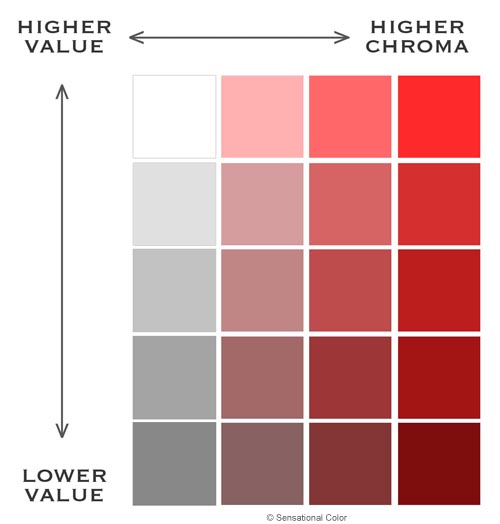

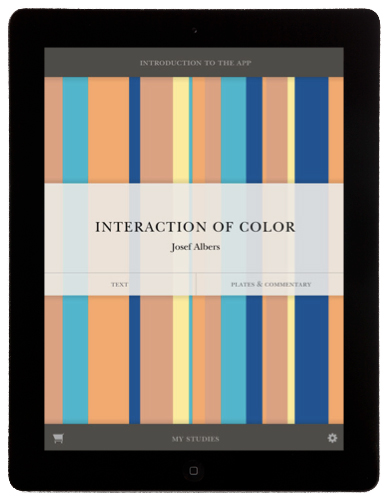
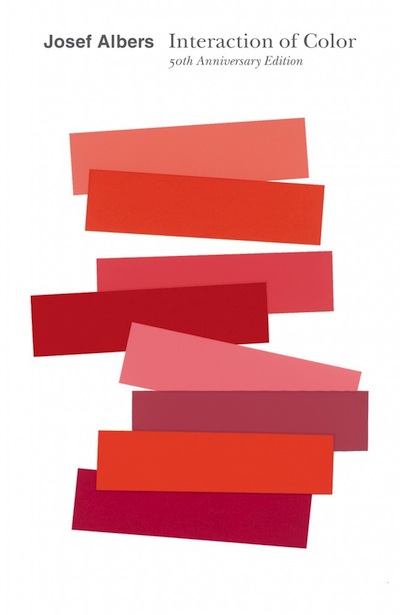
 .
.
